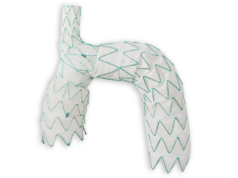The American Registry for Diagnostic Medical Sonography’s (ARDMS) new Registered Physician in Vascular Interpretation (RPVI) certification offers validation, credibility, and recognition for physicians who interpret vascular ultrasound tests. In the wake of recent innovations in diagnosing and treating vascular disease, multiple medical specialties are now working alongside each other in vascular ultrasound diagnosis.
For this reason, many of these specialists have been looking for some sort of standardized documentation that would expressly validate their expertise in interpreting the findings from vascular laboratory tests.
To meet this demand, the ISO 17024-accredited ARDMS, widely known as the pre-eminent body in sonography/vascular ultrasound credentialing, has developed the RPVI credential.
RPVI – requested by vascular surgeons
The initial impetus for developing this credential came from physicians who practise vascular ultrasound. ARDMS was asked to develop an examination that would provide a standard as proof that physicians from various specialties who had earned the RPVI would know how to interpret what they were observing with vascular ultrasound images.
To determine what sorts of content should be included in the RPVI examination, data were obtained from a detailed survey instrument completed by vascular ultrasound physicians, in multiple specialties. The practice data were used to assemble a comprehensive ‘job blueprint’ of the specific knowledge and skills needed to interpret vascular ultrasound tests with consistent accuracy.
“One reason why the RPVI credential has value is that physicians who interpret studies in vascular labs come from different medical backgrounds: surgeons, cardiologists, radiologists, and others. This credential will provide a common denominator – a common standard that they’ve all met,”
Dr R Eugene Zierler, Chair of the Department of Surgery, and Medical Director, Vascular Diagnostic Service, University of Washington, Seattle, and Member of the ARDMS RPVI Exam Development Task Force.
How the PVI examination was constructed
The questions included in the PVI examination were written by some of the best-known experts in vascular laboratory testing. The specific number of questions on each area of vascular ultrasound interpretation contained in the PVI examination was allocated according to the findings summarized in the job blueprint. The percentage allocation for each area on the examination appears on the ARDMS website: www.ardms.org. As the number of vascular ultrasound procedures performed continues to grow, and the number of specialties involved in this field continues to expand, the RPVI credential will offer a uniform standard for all physicians who wish to validate their expertise in interpreting vascular tests.
“When you consider that vascular laboratories are now multi-specialty-run, and there is a need to decide who is competent to interpret vascular tests, the new RPVI credential will be one key measure,” said
Dr Jeffrey Olin, Director, Vascular Medicine, Mount Sinai School of Medicine, New York, and Member of the ARDMS RPVI Examination Development Task Force.
How does the RPVI credential differ from the RVT?
The content of the RVT credentialing examination relates to all of the tasks that vascular technologists/sonographers do in the course of performing their vascular laboratory work.
In contrast, the RPVI examination concentrates on the interpretation of vascular laboratory tests, which is what most physicians in the vascular laboratory actually do. Also, the new examination is a single multiple-choice exam – not two exams, as required for the RVT – and includes questions on both physics and instrumentation and the interpretation of vascular imaging tests.
The pilot test of the PVI examination was completed on 30th September 2005. The data from the pilot test were then used in statistical validation of each RPVI examination question and, in addition, to establish a passing score. The RPVI application was launched in January 2006. Before you decide to apply, please check to see if you meet the established prerequisites for the exam, noted on the ARDMS website, under the Physicians’ Exam section.
The collaborators request that if do meet one of the pre-requisites, you may apply to sit for the RPVI examination online at the ARDMS website, or order a printed application, also via the website.












